I recently helped someone navigate one of the most challenging aspects of modern defensive firearms ownership: choosing an optic for a general-purpose AR-type semi-automatic carbine. What makes this such a potential ordeal is the nearly limitless variety of options available. From red dot to reflex, holograph to etched reticule, fixed power to variable and everything in between, there is something for everyone (and too much for most, I’d say). And we’re not even going to get into the different reticule patterns available on modern riflescopes — whole books can (and have) been written about those. So let me give a little background and then we’ll look at the choices that were made and how we made them.
The Parameters
Our erstwhile optic owner is an experienced user of the AR-15/M16 platform, a military veteran who had participated in “combat competition” matches while in the service. In fact, this aspect is what caused the search for a new optic to begin. While a member of a military rifle team, our guy went out and bought an optic that was both highly advantageous in competition and approved for use on military small arms. But several circumstances have changed since that time:
First, he is out of the service now, so he no longer has much opportunity to shoot at 300 to 500 meters. In fact, his need to shoot an AR-15 at these distances is practically nonexistent. Second and more compelling is that he has finally admitted his eyesight isn’t what it used to be. Back when he bought his previous optic, he didn’t even wear glasses. Now he not only wears glasses but they have a progressive lens, which is just a term used to keep people who believe they are too young for bifocals from hanging themselves.
This is important to understand, because it means there is a big difference between how well our shooter sees with his glasses on and how well he sees without them. Despite the fact that the Trijicon ACOG fixed 4X magnification model TA-01 is an excellent piece of optical technology, well suited to military combat use and which served our shooter flawlessly, it just doesn’t work anymore. So there’s requirement number one: the new optic must offer the ability to be used with or without glasses, for shooting at ranges not likely to exceed 100 meters.
We also have to consider the intended use. This guy isn’t in competitive shooting anymore, so what’s the carbine for? It’s for home defense, and you know what that means: requirement number two is that the new optic must be rugged and reliable. This narrows the field of potential choices considerably. There are some great products out there, and many good ones. And if the purpose is hunting, plinking, or target shooting, good is fine and marginal will often do. But for protection of life and limb, only the very best is good enough. Besides, our guy isn’t giving up a Trijicon ACOG for a unit of lesser quality, right?
The Contenders
Having established all of the above, let’s look at the contenders. Bear in mind that this group is hardly comprehensive and there are tons of other options. If your favorite isn’t included, rest assured no disrespect was intended. It simply wasn’t on hand for us to consider. We narrowed our field down to these three finalists based on the fact that they have no magnification and therefore do not have the eye-relief problem that caused all this in the first place. They all feature a bright aiming point that is easy to see and use. They all have a proven track record in adverse conditions, making them suitable for our “serious social application.” Finally, they are all easily installed on any M1913/Picatinny rail, in this case the flattop upper receiver of an AR-15 carbine.
Meprolight
First up was the Meprolight model Mepro 21 reflex sight. This unit has a lot going for it, including a reticule that is illuminated by both tritium and light-gathering fiber-optic filament. It doesn’t even need batteries. What we liked was its “bolt on and forget” simplicity and bullseye reticule. This is a thick circle with a dot at its center for an aiming point. The unit is compact and features a good-sized window on which the reticule appeared. The reticule itself is a highly visible bright orange and stands out well against the dark aqua background.
This is what we didn’t like: the optical lens is tinted a shade of greenish-blue that makes the reticule really “pop.” In bright sun or other abundant light, this is of no consequence. But in less optimal conditions, we found it was difficult to discern detail of anything visible in our background. With typical home defense activity, this likely isn’t very meaningful, because the entire field of view will be filled with bad-guy torso, but we disliked it anyway. It seemed unduly difficult should we need to shoot with greater precision … but who am I to argue with the Israeli army and their choice of combat optic?
EOTech
Our next finalist was one of L3 Communication’s well-regarded EOTech holographic sights. These feature a relatively huge field of view, like looking through your kitchen window, combined with an excellent “circle-dot” reticule aiming point. Although there are several models from which to choose, we settled on the popular model 552, to our understanding the most commonly used law enforcement and military version of the EOTech. We liked the big window, the ability to dial up (or down) the brightness of the reticule at will, and the fact that the whole thing runs on two AA batteries — it doesn’t get much more common than that!
We didn’t like that we somehow kept getting fingerprints all over the lens, even though it isn’t necessary to touch it during installation, operation, or removal. Also, we didn’t like that with his glasses removed, the shooter had to turn the brightness waaaayy up in sunlight. This caused the circle portion of the reticule to become so fuzzy that it made using the center dot a little more difficult. This so-called “halo” effect was not as pronounced while wearing the glasses, so it’s an individual problem more than an issue with the sight itself.
Aimpoint
Last but not least came the Aimpoint model PRO (Patrol Rifle Optic), a new addition to their long and very popular line of red-dot sights. The PRO is really nothing new, simply a scope-like tube with no magnification and a single red dot as an aiming point. The PRO is packaged complete with a nifty QRP-2 “rail grabber” mount, which makes installing the sight absolutely brainless. Not that the others are difficult, but with this one, you almost can’t believe you did it correctly!
We liked the mount, of course, including its adaptability to other platforms if needed. We liked the uncluttered single dot aiming point, particularly because it is almost immune to the “wash out” halo effect. We’re amazed by the patented ACET technology, which means that the battery will last with the optic turned on – and on power-level seven out of ten — for up to three years. Aimpoint even includes an “in service” date sticker to remind the user what month and year he turned the thing on!
We also liked the precise shape of the dot. It can be minimized to a tiny speck if conditions call for a long shot on a small target. We didn’t like … we didn’t like … we had a hard time coming up with anything we didn’t like. The Aimpoint PRO was ideal right out of the box. The only thing we may add is a see-through front lens cover in the event that our shooter grows too lazy to operate the provided flip-up cover. Our final choice? The Aimpoint PRO was bestowed the honor of replacing the beloved Trijicon ACOG TA-01.
Who Is This Mysterious Shooter?
Throughout this article, I have referred to the shooter in question in the third person. But if you haven’t realized it by now, I’m the shooter. I simply found it easier to talk about my shortcomings and methodology for choosing a sight this way. Also, if you are familiar with my contributions here at PDN, you know I dislike the formal extended testing regimen so common in reviews of guns and gear. I prefer to see what my customers and students see, and in the same limited amount of time. I find this helps me prioritize my preferences and minimizes my fretting about minor details. It either works or it doesn’t.
Which brings me to this: the sights mentioned here all work, as do many others. The right optic for me presented itself after I undertook this simple process: I identified the tasks required of the new optic, followed by the conditions under which it would be used. This gave me some worthy candidates, which I then compared side-by-side. The result was a quality piece of equipment that fits my requirements perfectly. You can do the same. But don’t take my word for it. If you’re looking for a quality optic for your carbine, get out to the gun shop and look through them yourself. You’ll be glad you did.

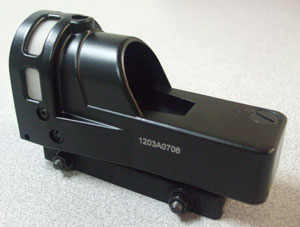

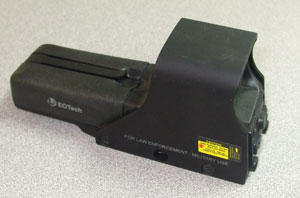
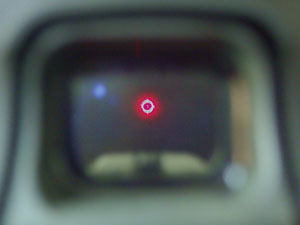
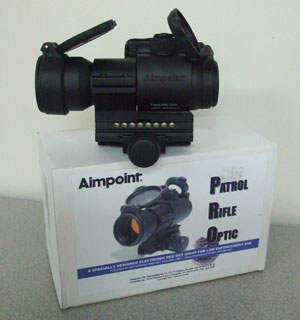
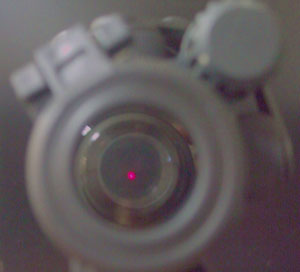
Hello Andy! Thanks for sharing this extensive information. Hope you know the AR 15 bore sighting function is something different. I'm looking for using a bore sight to my AR 15 but can't decide the right one from this https://spottingpro.com/best-bore-sight/. Can you please help me out to find the right one? The purpose is shooting a moving target. Thanks!
If I had the budget my first choice would be the Leupold Mk6 1-6x20mm–which has a very nice BDC reticle calibrated for the 62gr 5.56mm load–but the Custom Shop enhanced VX-6 would make a damn good choice as well and for several hundred dollars less. Still, the Burris 1-4×24 Tac 30/Fastfire II combo goes around $500 complete with Burris’s P.E.P.R. mount. That’s a hell of a deal if you ask me!
Aimpoint pro is a great choice for the ar 15 rifle. Its performance is awesome. It is also best scope for the value. Without any concern anybody can take this and use it on their ar 15 rifle to get nice experience.
Thanks for sharing the useful guide about the “Choosing An Optic For An AR-15-Type Carbine”. Such guides are really helpful who are seeking for the correct and right information on web. I'll appreciate your effort in putting up this article. Keep sharing good stuff. Thanks.
Hello! I am crazy about the scopes, Riffels, Guns, all the equipment that is being used for hunting and shooting and it is something which gives me special feeling as i am not in the favour of hunting innocent animals. My more interest is in in the field of shooting. For shooting i keep on reading different articles that are about riffel scopes and optics. This keeps me updated. I have a huge collection of scopes, guns at my home and i am really fond of adding more to the store as this will help me in adding to the flavour more and more. Well coming back to the point, i was searching for a scope to buy, find something interesting at https://shopiwave.com/best-ar-15-scopes-optics/ Now reading your amazing article. Well you right something that i have not found on the web. The article name is amazing. Choosing the optic. I would say that keep posting the positive and valueable stuff on the web. Informative and Value added.
Red Dot on Ar 15 makes a significant difference. I have my nikon p223. But it doesn't have that red thingy. Should I just mark it with my Red Permanent marker? The Lens should not be affected by this? Please let me know
Yes, I am using Aimpoint PRO ar 15 scope. I am really satisfied with its performance. Andy, You have explained very well of those ar 15 scopes.
Thanks for this great article . I really enjoy it . I am really interested in rifle scope . I have Ar 15 and I am using different scopes for it . You gave such an awesome tips for me . Thanks again .
One and the same, italian customizations are better done, and the packaging is beautiful
Well... my optic budget is considerably less considerable than that of the author's. I've opted for the PA microdot which works very well and is affrodable to just about anyone. However, I also wear the dreaded progressive lenses and the horrible multi-dot halo effect I experience when using a magnifier with the PA Micro has caused me to look further. Enter the EOTech knock-off. It has all of the looks and a few of the features of the real thing. I love the dount and dot, and it doesn't halo on me, with or without glasses or magnifier. It has variable brightness that works well in bright sunlight and switchable red or green reticle. It's also almost insurmountably difficult to zero (no it didn't come "zeroed" out of the box like the real thing) as the adjustment turrets don't even click and are atrociously imprecise. And, now that it has several hundreds rounds on it, it has develped a connection issue under recoil. It's likely that I only need to stretch the spring in the battery compartment and get a good set of fixed iron sights to referrence my dot with, in order to address these issues. But it illustrates the point that there are myriad potential issues in choosing the optic that works for any one person. And one very determining factor is budget. Since the AR platform is the most commonly held rifle in the country, and that means users will encompass a wide variety of budgets, any article that attempts to address the selection of AR optics on a monolithic, best-only basis, is very limited in its applicability IMHO. Bottom line is, you do get what you pay for. But you also get what you CAN pay for. I would love to see a follow-up article highlighting three lower-cost options and depicting some of the issues to consider which are specific to a lower tier offering. Michael